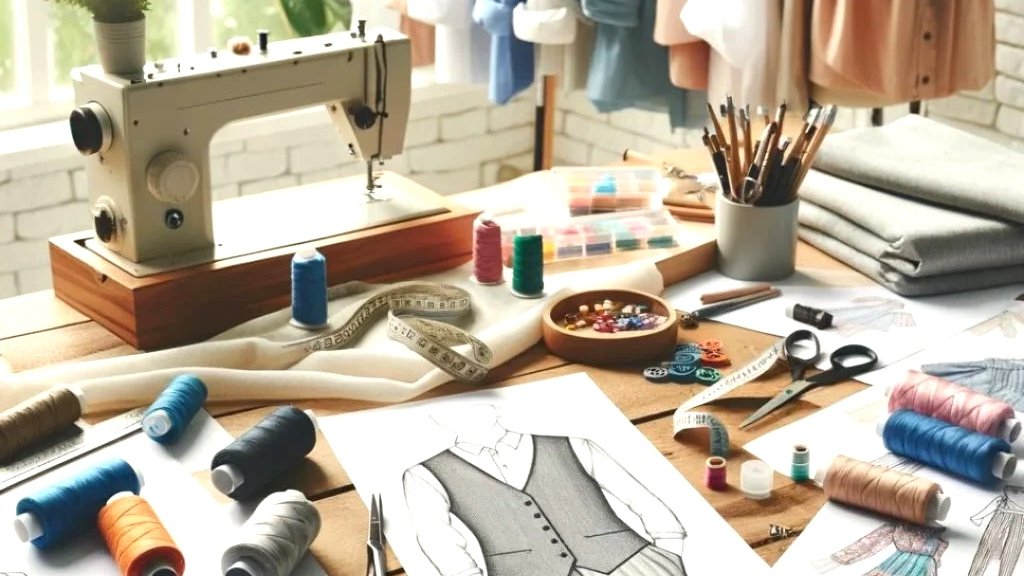
Kickstart Your Fashion Brand: A Step-by-Step Guide Using AI
G'day mate, thinking of chucking a sickie and starting your own clothing brand? You're in the right place, cobber.
In this ripper guide, you'll learn how to start a clothing brand from scratch - step by step.
Whether you're a fashion tragic with a creative spark or an entrepreneur eyeing the booming apparel market, this article will walk you through every stage of the process, from branding and business planning to design, production, and launch.
Plus, you'll discover how to leverage AI tools to speed up everything from design inspiration to marketing automation, helping you turn your vision into a successful fashion brand - faster than a rat up a drain pipe.

Define Your Clobber Brand Identity
Before sketching your first design or choosing fabric, it’s crucial to define the identity of your clobber brand. Your brand identity is the foundation of everything - from your logo and color palette to the tone of your social media posts and the people you want to reach.
A strong identity helps you stand out in a crowded market, resonate with your target audience, and build lasting customer loyalty.
Start by answering these key questions:
- What style defines your brand (e.g., minimalist, streetwear, luxury, boho)?
- Who are you designing for? (age, gender, lifestyle, values)
- What makes your brand unique compared to others?
- What emotions or experiences do you want your clobber to evoke?
Pro tip: Use AI-powered brand tools like Looka or Brandmark to instantly generate mood boards, brand color palettes, and logo ideas based on your vision.
Sample Clobber Niches and Brand Directions
| Niche | Audience Target | Brand Feel | Example Styles |
|---|---|---|---|
| Sustainable Clobber | Eco-conscious millennials | Earthy, minimal | Organic cotton basics |
| Streetwear | Gen Z & urban youth | Bold, expressive | Graphic tees, hoodies |
| Luxury Ladieswear | Affluent professionals, 30s–50s | Elegant, timeless | Silk dresses, coats |
| Gender-Neutral | Trendsetters, inclusivity-focused | Modern, fluid | Oversized unisex fits |

Start Your Biz Plan for Your Fashion Biz
Every successful gear brand kicks off with a rock-solid bizzo plan. This roadmap helps you suss out your dream, lock in your goals, and get set for the nuts and bolts of getting your brand up and running.
A clear bizzo plan isn’t just for you - it’s also a ripper tool for luring in investors, snagging funds, or steering partnerships.
What's In the Game Plan
- Brand Drive & Dream – What pumps up your fashion brand and what's your long-term endgame?
- Target Scene – Nail down your top-shelf customer: how old, what do they dig, their style vibes, and how deep are their pockets.
- Bizzo Style – Will you go with print-on-demand, wholesale, direct-to-customer, or drop shipping?
- Shop Stuff Plan – What's on your shelves? Kick off small or start with a full spread?
- Ad Game Plan – Online, offline, buddy-ups with influencers, cooking up content, or cash for ads?
- Money Guesses – Costs, cash forecast, and when you'll start rolling in the green.
⚡ Bot Boost: Gadgets like ChatGPT, LivePlan, or Notion AI can get your bizzo plan bits sorted, line up cost guesstimates, and whip up growth scenarios quicker than going old school.
Example Gear Brand Startup Costs (Estimates)
| Money Moves | Ballpark Buckaroos (USD) | Deets |
|---|---|---|
| Look & Logo | $100–$500 | Lean on bots or freelance style chiefs |
| Webbies & Domain | $150–$500 | Go Shopify, Wix, or WooCommerce |
| Try-Out Goods | $500–$2,000 | Depends on what you're cooking and what it's made of |
| Buzz Budget | $300–$2,000/month | SEO, social ads, buddy-up with influencers |
| Laws & Licenses | $200–$800 | Differs based on postcode and setup |
| First Batch Gear | $1,000–$5,000+ | Optional if you're printing on the spot |

Use AI to Accelerate Your Design & Planning Process
Launching a clothing brand in 2025 doesn't have to be slow or complicated. Thanks to modern AI tools, you can dramatically reduce the time it takes to plan, design, and prepare for launch. Whether you’re brainstorming collections, naming your brand, or visualizing your audience, AI can speed up the process—and reduce decision fatigue.
⚙️ AI Tools That Can Help You Get Started
| Use Case | Recommended Tool | What It Does |
|---|---|---|
| Brand Name Generation | Shopify Name Generator, Namelix | AI-powered suggestions based on keywords and industry |
| Mood Boards & Inspiration | Fashwell, Designify | Generate visual styles, layouts, and fashion-forward boards |
| AI-Powered Design Sketches | Cala, Revery AI, Artbreeder | Turn prompts into fashion illustrations and concepts |
| Business Plan Generation | ChatGPT, Notion AI | Draft plans, pitch decks, and competitive summaries |
| Market Analysis | Trendalytics, Edited | Use AI to scan trends, pricing, and gaps in the market |
Pro tip: Combine ChatGPT + Canva to create stunning branded content quickly—even if you have zero design skills.
Time-Saving Potential with AI
- Using AI tools in your planning phase can help you:
- Generate 10x more design ideas in less time
- Test brand directions visually before investing money
- Forecast trends and adjust accordingly
- Speed up product descriptions and marketing copywriting
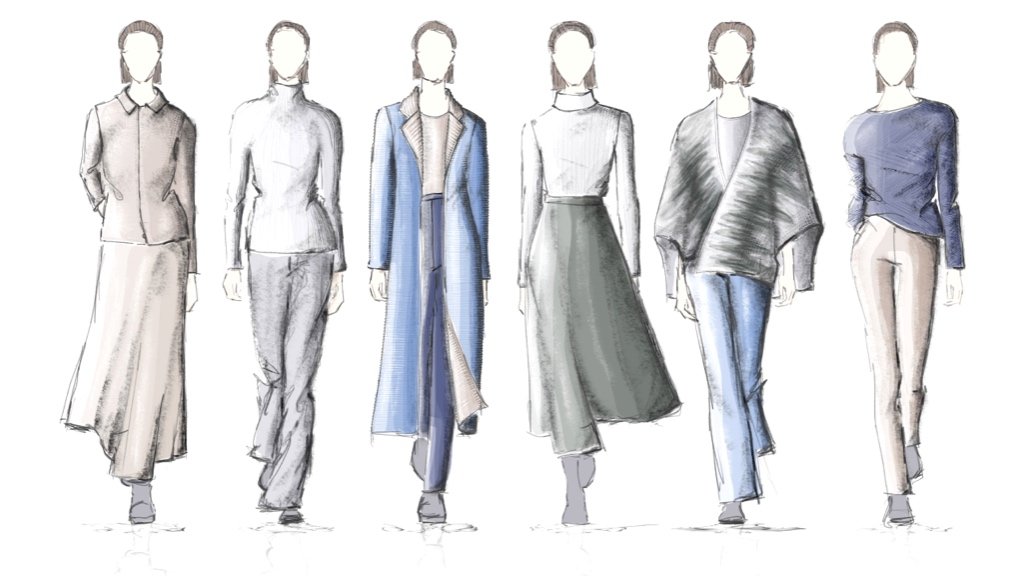
Getting Your Threads Sorted: From Idea to Outfit
Now that your brand is sorted and your game plan is set, it’s time to get cracking on the design front, mate. This is where your creative juices start flowing and things really come together. Your first clothing line should be a fair dinkum reflection of your brand, resonate with your target mob, and show off your unique style. But don’t forget—it’s not just about the look. Your threads should also be easy on the wallet and doable in the real world.
Kick things off by sketching out your ideas. Even some basic doodles can be the start of something great. Bring your vision to life with initial concepts, thinking about stuff like shape, color scheme, fabric choice, and what’s in for the season. You can sketch the old-school way or use tools like Clo3D, Adobe Illustrator, or even fancy AI design helpers like Revery AI and Cala to whip up some rough drafts. AI can also speed things up by cranking out different versions of your designs and even whole outfits.
Once the sketches are good to go, it’s time for the nitty-gritty of product development. This means making tech packs, figuring out measurements, picking fabrics, and prepping patterns for production. If big-time manufacturing is a bit much for now, think about whipping up some handmade samples or going for small-scale production. Start small with a capsule collection—5 to 10 pieces that tie in together and give you a feel for what your crowd likes.
Getting Your Threads Sorted: From Idea to Outfit
| Element | Description | Tool Suggestion |
|---|---|---|
| Sketches | First look at each bit of clothing | Pencil, Adobe Illustrator |
| Tech Packs | Deets, materials, and how it all goes together | Techpacker, Google Docs |
| Fabric Selection | Picking the right materials and textures | Swatch Books, Fabric.com |
| Pattern Making | Turning your ideas into templates for cutting and sewing | Clo3D, Seamly2D |
| Sample Creation | Making the first physical versions of your clothes | Local seamstress, DIY sewing |
Getting Your Threads Sorted: From Idea to Outfit: Use image-to-sketch tools like DeepAI Sketch Generator or Artbreeder to bring your ideas to life in a flash, even if you're not much of an artist.
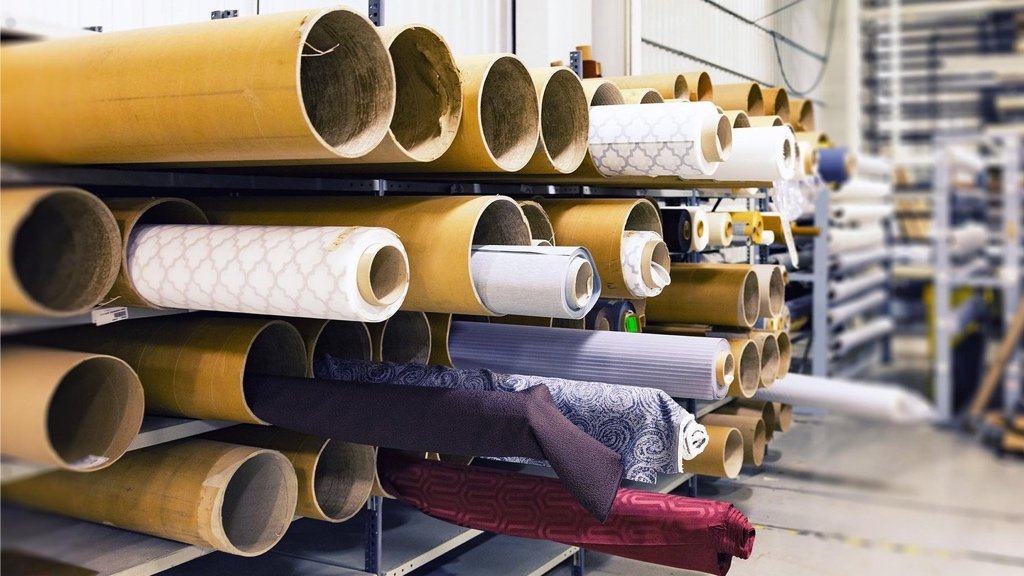
Scoping out eco-friendly threads and nailing your manufacturing mojo
Choosing the right fabrics and production method is one of the most crucial calls when starting your fashion hustle. The gear you pick directly impacts how your gear looks, feels, lasts, and what footprint it leaves.
Whether you're chasing down primo organic cotton or rocking wild synthetics, sourcing should sync up with your brand vibe and vibes - especially if you're pushing the sustainable or luxe angle. Kick off small by grabbing fabric samples from crews like Spoonflower, Tissura, or Alibaba, and think about cruising by local textile markets to get hands-on with your picks.
Now, line up how you’ll actually make your threads. If you're testing the waters with your first range, you can stitch up samples in-house or with a local stitcher. But for bigger runs, you'll need to weigh up local versus offshore production. Local gigs give you more reins and quicker turnarounds but usually jack up the price.
Offshore setups - like sweatshops in China, Turkey, or Bangladesh—might cut costs, but bring dramas like language snags, freight wait times, and quality checks. AI can lend a hand here, too: jump on platforms like ZyloTech or Maker’s Row that run AI to match your brand with top-notch makers based on your gear and output needs.
Scoping out eco-friendly threads and nailing your manufacturing mojo
| Production Style | Best Match | Pros | Cons |
|---|---|---|---|
| DIY (Do It Yourself) | Small batches, handmade vibes | Total control, low minimums | Time-drainer, scaling limits |
| Local Producer | High-end/ethical lines | Speedy turnarounds, simpler chats | Pricier, less volume |
| Offshore Producer | Bulk runs, wallet-friendly setup | Cheaper per piece, scalable | Tongue twisters, sluggish freight |
| Print-on-Demand | Low-key tryouts, chilled gear | No bulky stock, minimal startup spend | Restricted tweaks, slimmer margins |
️ Sourcing tip: Use FabricAI (if it's around) or Sourcemap to hunt down ethical pros and track the green impact of your gear picks.
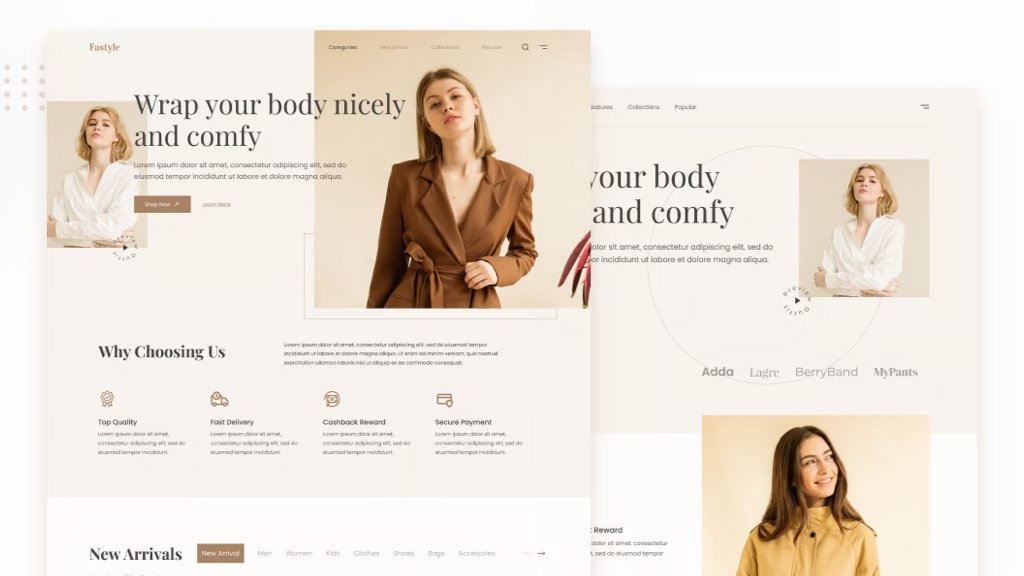
️ Build Your Online Store and Digital Presence
Your online store is more than just a place to sell - it’s your digital showroom, your brand’s first impression, and often your primary sales channel. It needs to reflect your clothing brand’s identity and create a seamless experience for customers.
Choose a reliable ecommerce platform like Shopify, WooCommerce, or Squarespace that allows you to easily manage inventory, track orders, and integrate with marketing tools. Customize your theme with your brand’s fonts, colors, and imagery to keep it cohesive. Don’t forget the basics: a powerful homepage, clean product pages, size guides, and an About section that tells your story.
An online presence goes beyond your website. You also need to create branded profiles across social media platforms like Instagram, TikTok, Pinterest, and Facebook, where visual content dominates and fashion thrives. Use these channels to drive traffic to your store, build a community, and showcase your designs.
Tools like Canva, Later, and Buffer can help schedule content, while AI caption generators like ChatGPT or Copy.ai can help you craft engaging posts at scale. Consider also setting up an email marketing funnel with Klaviyo or Mailchimp to capture leads and keep your audience informed.
Must-Have Pages for Your Clothing Brand Website
| Page Type | Purpose | Pro Tips |
|---|---|---|
| Home Page | Showcases bestsellers, collections, brand story | Use high-quality visuals + clear CTA |
| Product Pages | Details on materials, sizing, and care | Include size guide + multiple images |
| About Us | Share your story and mission | Build connection with your audience |
| Contact Page | Offers support and customer service options | Use forms and social links |
| FAQs | Handles common buyer questions | Boosts trust and reduces cart abandonment |
Tip: Use Shopify Magic or Gemini for WooCommerce to automatically generate product descriptions, SEO meta tags, and even A/B test landing pages.

Crack the Code on Pricing Your Gear and Keeping Track of Stock
Getting your threads priced right is crucial for making some moolah and winning over your crew. It's not just about slapping a price tag on materials and labor - you gotta consider all the extras, like marketing dollars, transaction fees, and where your label sits in the scene.
For instance, if your threads are all about that top-shelf quality and ethical vibes, your price tags should reflect that premium vibe. A savvy pricing game mixes covering your costs with what your dream buyer is willing to splash out. And smart tools like Prisync or ChatGPT can help you suss out the competition, work out markups, or play around with different price points in a flash.
Once you've locked in your prices, wrestling your inventory into shape is a critical mission. Piling up too much stock can drain your cash, while running low can send your shoppers packing.
To stay ahead of the game, lean on inventory apps like Stocky (for Shopify), Zoho Inventory, or Cin7 that come with clever forecasting features, low stock warnings, and real-time stats. If you're just dipping your toe in, think about the made-to-order or pre-order approach, which trims down your inventory risk and builds buzz for your threads.
As your biz grows, you'll wanna level up to a more seamless inventory setup - one that plays nice with your site and other sales spots.
Crunching the Numbers on Fashion Prices & Cashflow Schemes
| Pricing Plan | How It Rides | Best Fit For | Markup Example |
|---|---|---|---|
| Cost-First Pricing | Tweak the cost to make a profit | Starters & plain Jane labels | Double to triple the cost |
| Value-Led Pricing | Tag based on how fancy your brand shines | Distinguished or major league labels | Triple to quintuple the cost |
| Kick-Off Markup | Old-school shop tags (50% margin) | Wholesale or dealer deals | Double the cost |
| Brainy Price Tactics | Flexi prices based on trend and stats | Bigger labels with sharp tools | Changes up |
Pro Tip: Tap into the forecast features on apps like Inventory Planner to auto-order and steer clear of stale stock.
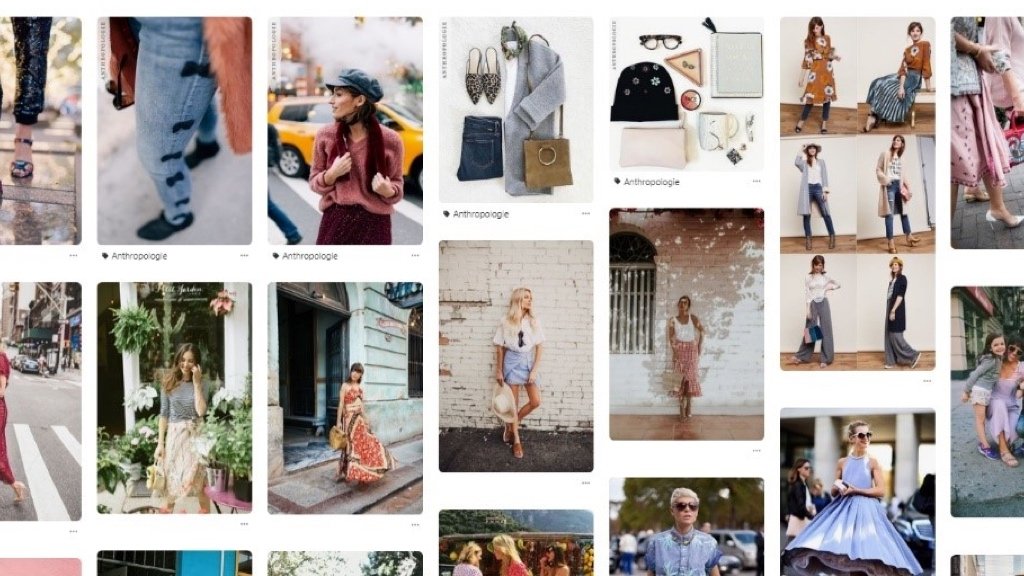
How to Spruik Your Clothing Brand (Organic & Paid Strategies)
Even the most beautifully designed clothing line won’t sell if people don’t know it exists. That’s why a strong marketing strategy is essential. Start by focusing on organic marketing—building a loyal community and brand presence without paying for every click.
Platforms like Instagram, TikTok, and Pinterest are essential for fashion, where visuals dominate. Post consistently, tell your story, show behind-the-scenes content, and engage with your audience. Use hashtags, reels, and collaborations to expand your reach. AI tools like Copy.ai, Flick, or ChatGPT can help you generate engaging captions, hashtags, and even scripts for short videos.
Once you have some traction, scale with paid advertising. Social platforms allow precise targeting by age, interest, and even fashion behavior. Start with Facebook Ads or TikTok Spark Ads, and A/B test creatives using AI tools like AdCreative.ai or Predis.ai.
Don’t forget about email marketing—an underrated but powerful tool. Platforms like Klaviyo and MailerLite can automate drip campaigns, welcome sequences, and flash sale alerts. With AI segmentation and predictive analytics, you can send the right message to the right user at the right time—without lifting a finger.
How to Spruik Your Fashion Brand (Organic & Paid Strategies)
| Strategy | Key Tactics | Cost Level | Best For |
|---|---|---|---|
| Organic | Content marketing, SEO, social engagement | Low (time-heavy) | New brands, budget-conscious |
| Influencer Collab | Gifting, shoutouts, micro-influencer outreach | Medium | Trend-driven or youth-focused |
| Paid Ads | Facebook Ads, Instagram Reels, TikTok Ads | Medium–High | Brands looking to scale fast |
| Email Campaigns | Launch alerts, abandoned cart, loyalty promos | Low–Medium | Engaged audiences, repeat buyers |
Tip: Tools like Ocoya and Lately.ai can automatically repurpose one piece of content into multiple social posts, saving hours per week.
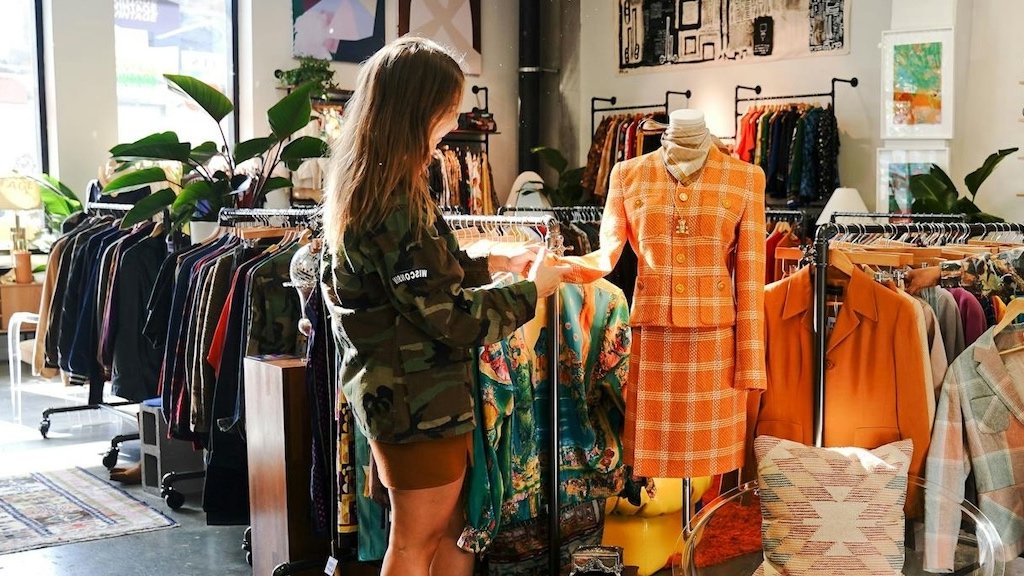
Test with Pop-ups or Local Markets
Before scaling your clobber brand, it's smart to validate your gear in real life. Pop-up stalls, local threads markets, and even vendor booths at shindigs offer a low-risk way to have a yarn with real customers, get fair dinkum feedback, and suss out how folks interact with your gear.
These temporary retail setups help you give your prices, sizes, packaging, and brand messaging the once-over - all while building brand know-how and potentially making some coin. Whether it's a weekend stall at a local art fair or a month-long pop-up in a high-traffic retail strip, these moments can become micro-labs for growth.
Plus, these events are top-notch for customer discovery. You can ask questions like “What made you keen on this piece?” or “Was anything blotto about the sizing?”—insights that are gold when tweaking your offering.
To jack up the impact, prep some branded signage, QR codes linking to your online store or social media, and bonuses like discounts for first buys or Instagram follows. AI tools like Canva Magic Design can help you whip up eye-catching visuals for flyers, banners, and packaging.
You can even use ChatGPT to cobble together your spiel script, gear signage, or ripper taglines that turn passers-by into loyal customers.
Pop-Up Testing Checklist
| Task | Why It Matters | Suggested Tool / Tip |
|---|---|---|
| Tell Stories with Gear Display | Helps customers get a sweet connection | Canva for signage |
| Offer QR Code for Online Shopping | Converts in-person fans into online shoppers | Beaconstac, Linktree |
| Keep Tabs on Best-Selling Gear | Unveils top-performing items | Google Sheets, Airtable |
| Snag Emails or Social Follows | Grows your list for future blitzes | Mailchimp app, IG follow prompts |
| Hit 'em Up for Feedback Straight Up | Aids in honing design and pricing calls | Simple form or just a notepad |
️ Tip: Use Google Forms + AI-generated questions to knock up snappy customer feedback surveys and break down the results later on with tools like ChatGPT Code Interpreter or Sheets AI.
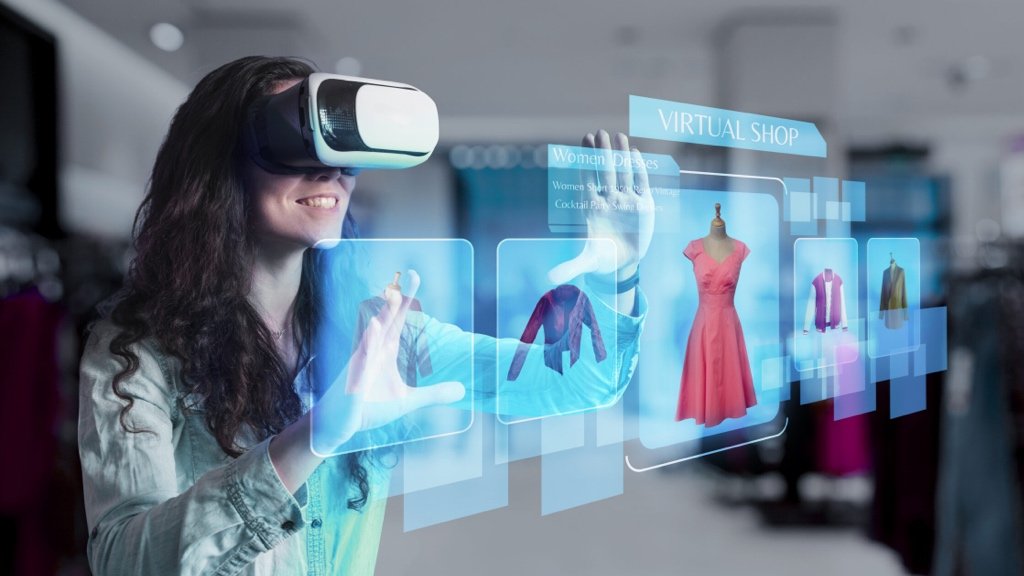
Getting your threads out there with some smart AI gear
Once your threads have hit the streets and been put to the test, the next move is to scale up smoothly—and the best way to do that these days is by getting a bit of help from AI-powered gear and automation to make your efforts go further.
Scaling up isn't just about boosting sales; it's about working smarter, not harder. From automated promo and clever stock management to predictive stats and optimizing your inventory, there are tools that can take care of the boring bits while you focus on being creative and strategic.
For example, AI can help predict demand and automatically restock your best-selling items. Tools like Inventory Planner, Shopify Flow, and Katana sync up production and sales data to avoid having too much or not enough stock. Want to step up your customer service without hiring a massive team? Use AI chatbots like Tidio or Gorgias AI to deal with order questions and suggest add-ons.
For taking your marketing to the next level, apps like Phrasee and AdCreative.ai whip up high-converting content and visuals in no time. Even customer reviews can be auto-analyzed with sentiment tools like Yotpo AI to help with product decisions or spot problems early on.
Getting the most out of your gear with AI
| Where to focus | Top Gear | What's it for |
|---|---|---|
| Smart Stockkeeping | Inventory Planner, Katana | Foresee demand, manage stock on the fly |
| Helpdesk Assistance | Gorgias AI, Tidio | Answer FAQs automatically, boost your conversions |
| Automated Marketing | Klaviyo, Phrasee, Ocoya | Create, personalize, and set up campaigns with ease |
| Ad Creation | AdCreative.ai, Predis.ai | Create and test ads without a creative team |
| Stats & Insights | Google Looker Studio, Glew.io | Keep an eye on your performance across platforms |
Pro tip: Use Zapier or Make.com to link up your online tools and create smart workflows—like sending thank-you emails automatically when someone makes a purchase from a pop-up.
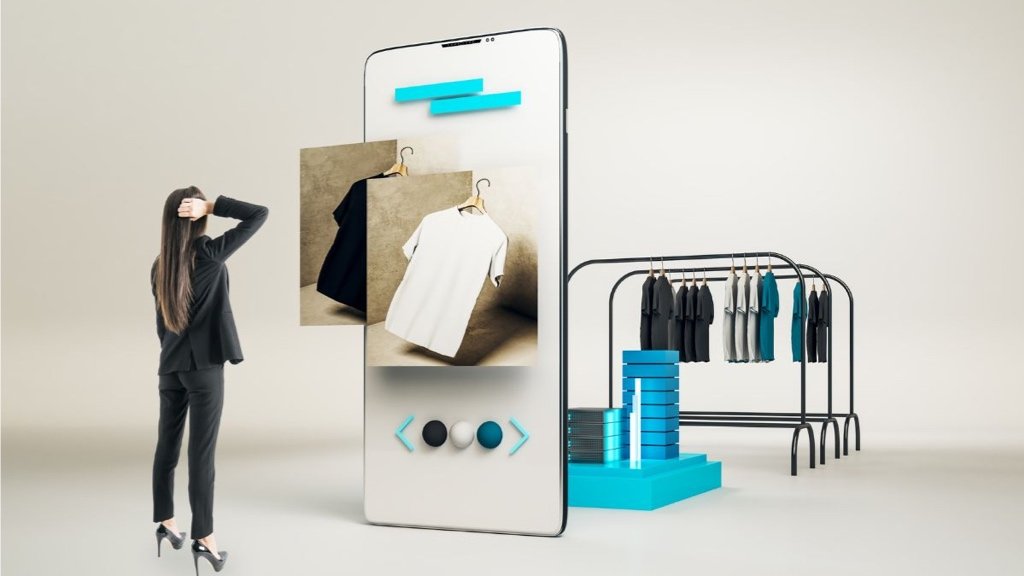
❓ FAQ: Starting a Clothing Brand
1. What's the go with kickin' off a clothing brand?
Answer: The first step is sorting out your brand identity—what sets you apart, who you're targeting. This sets the vibe for your designs, messaging, and marketing. Then suss out a business plan, getting your first line sorted, and testing the waters with pop-ups or online.
2. Is it a must to have a license to start a clothing brand?
Answer: Yeah, most places need you to get your biz registered and grab licenses like a sales tax license or a vendor permit. If you're selling online or shipping worldwide, check the rules about labels, returns, and privacy. Hit up a local business bureau or use tools like LegalZoom or Termly for the lowdown.
3. How much moola do I need to kick things off with a clothing brand?
Answer: Costs vary. Keeping it DIY, you might only need about $500 to $2,000 for print-on-demand or handmade gear. If you're going all out with custom manufacturing, website setup, and marketing, be prepared to drop $5,000 to $20,000+. AI tools can save you a motza on branding, design, and content creation.
4. Is AI fair dinkum useful for small clothing brands?
Answer: You bet. AI can help with designing collections, creating marketing content, organizing stock, and even forecasting trends. It lets solo founders go head-to-head with big teams by automating tedious tasks and speeding up the whole process.
5. Can I flog clothes without a brick-and-mortar store?
Answer: Sure can, and these days it's dead common. Loads of labels rock it with just an online store and a presence on Instagram, TikTok, and places like Etsy or Amazon. You can also test the waters locally with pop-up gigs or teaming up with retail shops without having your own joint.
6. How do I come up with a cracker name for my clothing brand?
Answer: Your name should capture your vibe, values, and target market. Keep it snappy, easy to say, and original. Tools like Namelix or Shopify’s Business Name Generator can give you ideas based on your brand identity and niche.
Get Cracking on Your Clothing Label Today, Mate
Kicking off a fashion brand down under in 2025 is bloody ripper––and more rip-roaring than ever before. With a bit of creativity, keen planning, and some AI wizardry, you can whip up your gear quicker than a snag on the barbie.
Whether you're cobbling together a limited range in your own digs or smashing out a full-on online store, nailing it boils down to staying on the grind, picking up smarts on the fly, and sticking true to your vision.
So chuck those London Docks on the paper. Suss out your target. Fire up that website. You’ve now got a dinky-di roadmap - along with the gear to turn your fashion fancies into fair dinkum reality.
✨ Keep in mind: The world's not thirsty for just another label. It craves your touch.